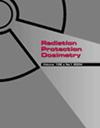热干燥后土壤样本中 129I 浓度的变化。
IF 0.8
4区 环境科学与生态学
Q4 ENVIRONMENTAL SCIENCES
引用次数: 0
摘要
为了精确评估土壤样本中碘-129(129I)的浓度,研究人员对土壤样本在几种温度条件下进行热干燥后的浓度变化进行了调查。这项研究使用的土壤样本采集自核燃料后处理厂附近的一个地点,该核燃料后处理厂在 2006-2008 年的一次试验操作中向大气释放了 129I,导致土壤样本中的 129I 浓度高于其自然水平。研究人员在 60°C 至 110°C 的温度范围内对土壤样本进行了热干燥,并将干燥结果与冻干结果进行了比较,结果表明,在所有干燥处理方法中,土壤样本中的 129I 浓度在统计学上具有可比性。本文章由计算机程序翻译,如有差异,请以英文原文为准。
Changes in 129I concentration of soil samples after thermal drying.
To precisely evaluate the concentration of iodine-129 (129I) in soil samples, changes in this concentration after thermal drying under several temperature conditions were investigated. The soil sample used in this study was collected from a site located near a nuclear fuel reprocessing plant, which atmospherically released 129I in a test operation in 2006-2008, resulting in the soil sample containing higher 129I concentrations than their natural levels. Thermal drying was conducted from 60°C to 110°C and compared with lyophilization result, showing that the 129I concentration in the soil sample was statistically comparable among all the drying treatments.
求助全文
通过发布文献求助,成功后即可免费获取论文全文。
去求助
来源期刊

Radiation protection dosimetry
环境科学-公共卫生、环境卫生与职业卫生
CiteScore
1.40
自引率
10.00%
发文量
223
审稿时长
6-12 weeks
期刊介绍:
Radiation Protection Dosimetry covers all aspects of personal and environmental dosimetry and monitoring, for both ionising and non-ionising radiations. This includes biological aspects, physical concepts, biophysical dosimetry, external and internal personal dosimetry and monitoring, environmental and workplace monitoring, accident dosimetry, and dosimetry related to the protection of patients. Particular emphasis is placed on papers covering the fundamentals of dosimetry; units, radiation quantities and conversion factors. Papers covering archaeological dating are included only if the fundamental measurement method or technique, such as thermoluminescence, has direct application to personal dosimetry measurements. Papers covering the dosimetric aspects of radon or other naturally occurring radioactive materials and low level radiation are included. Animal experiments and ecological sample measurements are not included unless there is a significant relevant content reason.
 求助内容:
求助内容: 应助结果提醒方式:
应助结果提醒方式:


